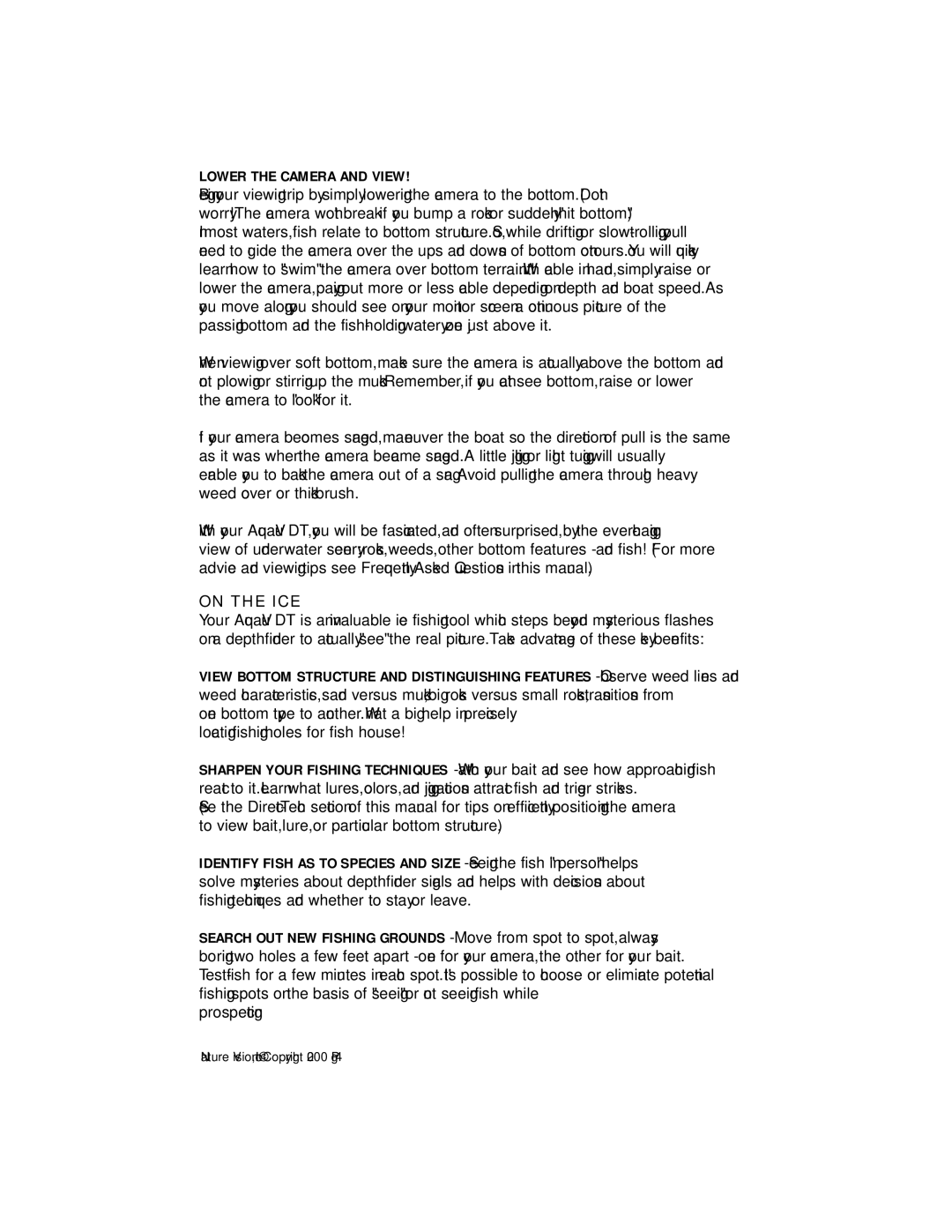LOWER THE CAMERA AND VIEW!
Begin your viewing trip by simply lowering the camera to the bottom. (Don't worry! The camera won't break if you bump a rock or suddenly "hit bottom.")
In most waters, fish relate to bottom structure. So, while drifting or
When viewing over soft bottom, make sure the camera is actually above the bottom and not plowing or stirring up the muck. Remember, if you can't see bottom, raise or lower the camera to "look" for it.
If your camera becomes snagged, maneuver the boat so the direction of pull is the same as it was when the camera became snagged. A little jiggling or light tugging will usually enable you to back the camera out of a snag. Avoid pulling the camera through heavy weed cover or thick brush.
With your
ON THE ICE
Your
VIEW BOTTOM STRUCTURE AND DISTINGUISHING FEATURES - Observe weed lines and weed characteristics, sand versus muck, big rocks versus small rocks,transitions from one bottom type to another. What a big help in precisely
locating fishing holes for fish house!
SHARPEN YOUR FISHING TECHNIQUES - Watch your bait and see how approaching fish react to it. Learn what lures, colors, and jigging actions attract fish and trigger strikes. (See the
IDENTIFY FISH AS TO SPECIES AND SIZE - Seeing the fish "in person" helps solve mysteries about depthfinder signals and helps with decisions about fishing techniques and whether to stay or leave.
SEARCH OUT NEW FISHING GROUNDS - Move from spot to spot, always boring two holes a few feet apart - one for your camera, the other for your bait.
prospecting.
Nature Vision, Inc. © Copyright 2000 Pg 4
